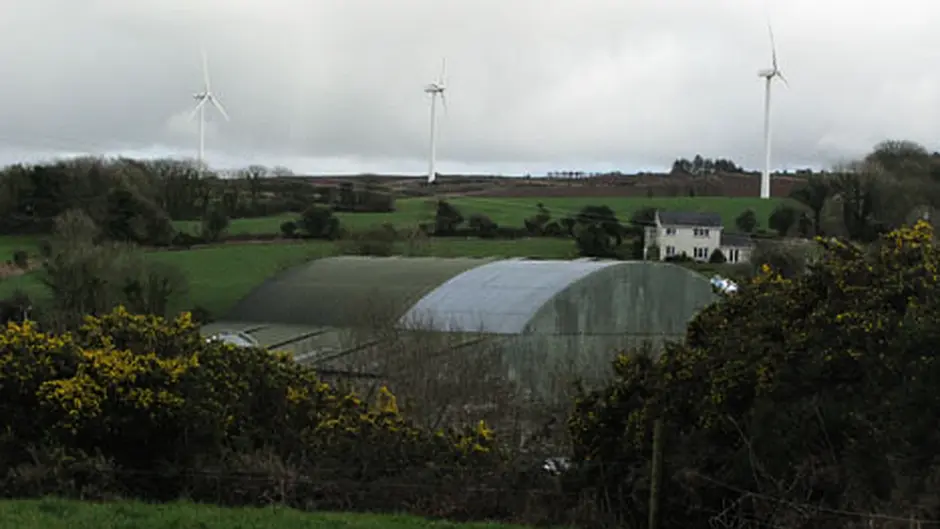An order restricting operations on a windfarm in Co Cork has been stayed to next June to allow the developer seek leave to appeal to the Supreme Court against the Court of Appeal’s findings that it acted in ‘material’ breach of planning permission.
AN order restricting operations on a windfarm in Co Cork has been stayed to next June to allow the developer seek leave to appeal to the Supreme Court against the Court of Appeal’s findings that it acted in ‘material’ breach of planning permission.
A stay continues on another order requiring dismantling of three wind turbines at the Kilvinane Wind Farm development, betweem Enniskeane and Dunmanway, due to not them being built in accordance with a 2002 planning permission.
A number of local residents have provided sworn statements making complaints including of noise and ‘flicker shadow’ from the turbines, the court heard.
The dismantling stay applies until An Bord Pleanala rules on the May 2014 application by Kilvinane Wind Farm Ltd (KWF) for substituted consent for the turbines as constructed. The Board previously ruled, in 2012, the turbines as built were unauthorised development.
William Henry Bailey, a retired engineer who brought the case against KWF, indicated to the Court of Appeal last week that, if substituted consent is granted, judicial review may be sought to get clarity on the issue of substitued consent in planning law.
Substituted consent ‘is a remedy for innocent transgression of the planning laws and is not a remedy for those guilty of deliberate transgression’, he said.
Last month, the three-judge Appeal Court unanimously ruled Mr Bailey was entitled to orders dismantling the three turbines and restraining their operation, but it stayed the dismantling orders pending An Bord Pleanála’s decision on substituted consent.
If the board grants substituted consent, KWL can then apply to have the orders lifted. When the case returned to the Court of Appeal last week, Garret Simons SC for KWF, said it would seek permission from the Supreme Court to appeal on grounds of the financial implications of the orders and wanted a stay on the orders to facilitate the intended appeal.
Ms Justice Mary Finlay Geoghegan said the court was anxious to make final orders now to ensure applications to the Supreme Court could be heard as soon as possible and evidence about the financial implications should have been prepared.
Mr Simons said the company’s accountants had not been available during the Easter period.
Mr Bailey, representing himself, said local people continue to suffer from the development. He wanted a speedy hearing before the Supreme Court and believed operations at the wind farm should completely cease pending any appeal.
Having heard the sides, the court said the stay on the dismantling order continues, pending the An Bord Pleanála ruling and it would also stay to June 8th the other orders restricting operations at the wind farm, on condition the developer file its appeal within 15 days in the Supreme Court where it could later seek any further stay if necessary.
It noted KWF has agreed to cease operation of the turbines between 11pm and 6am daily, and that Mr Bailey was entitled to his reasonable costs and expenses of bringing the case.
In the Appeal Court judgment ruling that Mr Bailey was entitled to the orders, Mr Justice Gerard Hogan said two of the three turbines have blade lengths of 90m, 23m more than specified, and all three were built some 20m from locations specified in the permission.
These were not ‘trifling’ breaches, they had consequences in terms of visual impact and noise for people living in the immediate vicinty, and there were also relevant planning considerations, he said.
While KWF and its principal Leonard Draper argued they relied on assurances from planners in Cork County Council, the deviations from permission were not material, the circumstances in which those assurances were given had ‘curious, even unsettling aspects’, including that a letter from the Council containing the assurances, dated October 3rd 2006, was date-stamped April 18th 2011 on the planning file, he said.
Mr Bailey’s home is among 28 dwellings in the vicinity of the site. Other residents provided sworn statements making complaints including of noise and ‘flicker shadow’ from the turbines.









